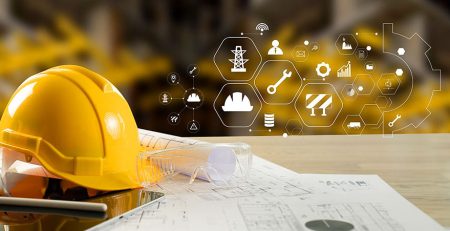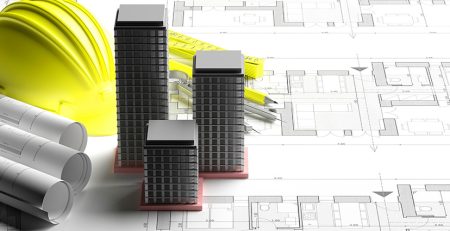Why is Accessibility Important? Inclusive Design in Modern Buildings
In today’s world, accessibility isn’t just a buzzword; it’s a necessity. As our society becomes more inclusive, the significance of accessible design in modern buildings has never been more apparent. Vescom International, a leader in innovative architecture, champions the cause of inclusive design, ensuring that every structure they create is accessible to all. But why is accessibility so crucial? Let’s delve into the world of inclusive design and explore its importance, benefits, and the future of accessible architecture.
Understanding Inclusive Design
So, what exactly is inclusive design? At its core, inclusive design is about creating environments that are usable by all people, to the greatest extent possible, without the need for adaptation or specialized design. This approach ensures that buildings cater to the diverse needs of everyone, including those with disabilities. Regulatory standards and certifications, such as the Americans with Disabilities Act (ADA) and the International Organization for Standardization (ISO) guidelines, set the benchmark for accessibility, ensuring that buildings meet essential requirements to accommodate all users.
Universal Design Features
Inclusive design isn’t just about compliance; it’s about creating spaces that genuinely enhance the experience for all users. Universal design features play a pivotal role in achieving this goal. Think about ramps that replace stairs, making it easier for wheelchair users and people with strollers alike. Wide doorways ensure smooth passage for everyone, including those using mobility aids. Tactile signage assists the visually impaired, while adjustable-height features in kitchens, bathrooms, and workspaces cater to individuals of all heights and abilities. These elements are not just practical; they symbolize a commitment to inclusivity and respect for all users.
Technological Solutions
Technology is a game-changer when it comes to accessibility. Smart assistive devices, such as automated doors and elevators, make navigating buildings easier for everyone. Voice-activated controls allow users to operate lights, thermostats, and security systems without lifting a finger. Sensory aids, including auditory signals and vibrating alerts, enhance the environment for those with sensory impairments. These technological advancements not only improve accessibility but also elevate the overall user experience, making modern buildings smarter and more accommodating.
Benefits of Inclusive Design
The advantages of inclusive architecture extend far beyond mere compliance with laws and regulations. Economically, inclusive design can attract a broader customer base, including people with disabilities, their families, and friends, thus boosting business. Enhanced user experience translates to higher satisfaction and loyalty. Additionally, inclusive design fosters community inclusivity, creating environments where everyone feels welcome and valued. By prioritizing accessibility, buildings can become hubs of interaction, learning, and growth for all members of the community.
Challenges and Solutions
Implementing inclusive design isn’t without its challenges. Cost considerations, for instance, can be a significant barrier. However, the long-term benefits often outweigh the initial investment. Designing for inclusivity from the outset can prevent costly retrofits down the line. Moreover, integrating inclusive features seamlessly into the overall design aesthetic can be challenging but not impossible. Creative solutions, such as incorporating ramps into landscaping or using multifunctional spaces, can overcome these barriers, ensuring that accessibility doesn’t compromise design integrity.
Educational and Cultural Spaces
Accessibility is particularly crucial in educational institutions, museums, and cultural centers. These spaces are meant to be inclusive, fostering learning and cultural exchange for all. Vescom International’s approach to designing such spaces focuses on creating environments that are not only compliant with accessibility standards but also enhance the user experience. For instance, museums with tactile exhibits and audio guides make art and history accessible to everyone, while schools with adjustable furniture and accessible technology ensure that all students can learn effectively.
Future Directions
The future of inclusive design is bright, with emerging technologies and design innovations paving the way for even greater accessibility. Predictive analytics and AI can help create personalized environments that adapt to individual needs. Smart materials that change shape or color based on user interaction could revolutionize accessibility. Furthermore, evolving standards will continue to push the boundaries of what is possible, ensuring that buildings become increasingly accessible. Vescom International is committed to staying ahead of these trends, continually innovating to create environments that are not only accessible but also inspiring.
Conclusion
In conclusion, accessibility in modern buildings is not just about compliance; it’s about creating environments that everyone can enjoy and benefit from. Vescom International’s dedication to inclusive design is evident in its projects, which blend functionality, beauty, and accessibility seamlessly. By prioritizing accessibility, we can create spaces that are not only practical and functional but also inclusive and welcoming.
If you’re inspired to make your buildings more accessible, explore Vescom International’s portfolio of inclusive design projects. Whether you’re planning a new project or looking to retrofit an existing space, Vescom International offers consultations to help integrate accessibility into your building designs. Let’s work together to create a world where everyone can navigate and enjoy their environments without barriers. Contact Vescom International today to start your journey towards inclusive and accessible architecture.











